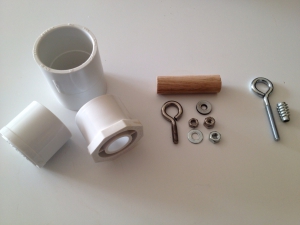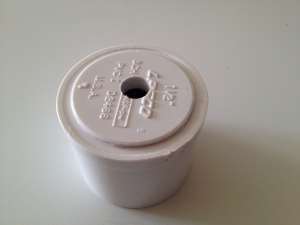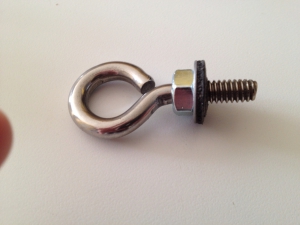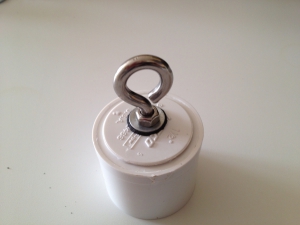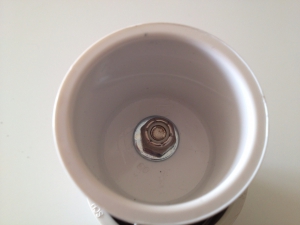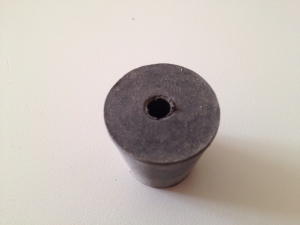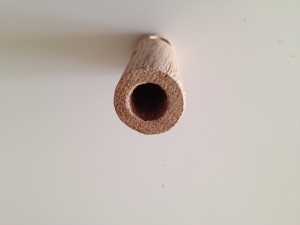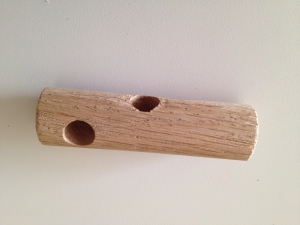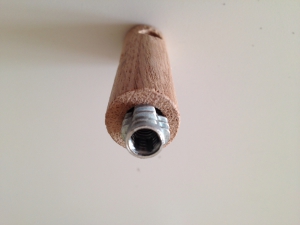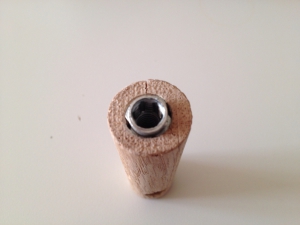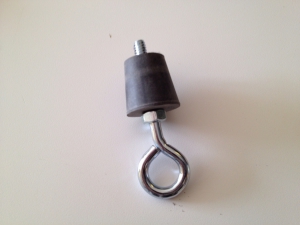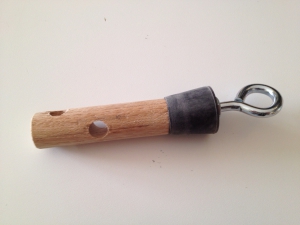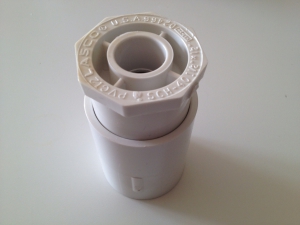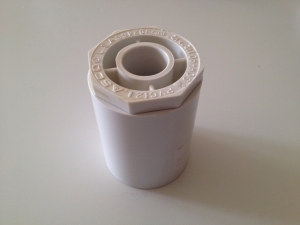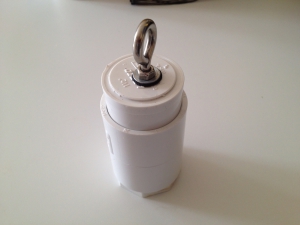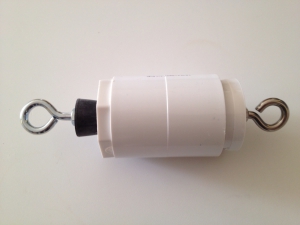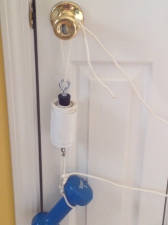Several years ago, I created a tutorial describing how to make a simple ice lock out of common PVC plumbing parts. I was never particularly happy with it, though. I just wasn't very secure.
So, I started working on a new design.
The new and improved ice lock is based on one of the $100+ stainless steel ice locks sold by several of the high end online adult toy stores. This lock is very secure... and the best part is you can build one for less than $15.
- 1 - 1-1/2" x 1-1/2" PVC Slip Coupling
- 1 - 1-1/2" PVC Plug
- 1 - 1-1/2" x 1/2" PVC Slip Bushing
- 1 - 3/4" x 2-3/4" Oak Dowel
- 1 - 1" Rubber Stopper - Should just fit in the hole in the Slip Bushing
- 1 - 3/4" Rubber Washer
- 1 - 3/4" Washer
- 1 - 1/4" x 1" Stainless Steel Eye Bolt
- 2 - 1/4" Nuts
- 1 - 1/4" Locking Nut
- 1 - 1/4" x 2" Stainless Steel Eye Bolt
- 1 - 1/4" Threaded Insert
- Drill
- 1/4" Drill Bit
- 11/32" Drill Bit
- PVC Cement
- Sandpaper
Drill a 1/4" hole through the center of the rubber stopper.
If you're lucky, your hardware store might carry a rubber stopper with a hole already cut in the center. Buy that one if you can.
Next, using the same drill bit, drill two more holes at right angles to each other through the side of the dowel. Make sure to drill the holes on the end opposite the end you drilled the hole in the previous step.
Start screwing the threaded insert into the hole in the end of the dowel.
It is very easy to split the dowel when you're screwing in the insert. If you are having trouble, try wrapping packing tape tightly around the dowel, and lube up the threads on the outside of the insert by rubbing it on a bar of soap.
Next, screw a nut as far as you can onto the larger eye bolt and then push the bolt through the hole in the rubber stopper.
You should end up with an assembly that looks like this.
Important The oak dowel will swell when it is wet. If the dowel fits snugly into the hole in the bushing when it is dry, it will bind when it is wet. This means you will be stuck!
If you use the exact materials specified here, you are going to need to reduce the diameter of the dowel by about 1/16". I did this by sanding it with course sandpaper.
Using PVC cement, glue the plug with the eye bolt that you completed in Step 4 into the other end of the coupling.
To use the ice lock, pour about 75ml of water into the lock and insert to dowel.
Push the rubber stopper in just enough to keep the water from leaking out.
Stick the lock in the freezer for a couple of hours and you're ready to go.
Here is a picture of the ice lock being tested.
To test, I poured 75ml of water in the lock and place it in the freezer (at 0 degrees Fahrenheit) for two hours. Then, I tied it to the door handle and attached a 5 pound weight.
With an ambient room temperature of 70 degrees Fahrenheit, the lock takes between twenty and thirty minutes to release.
I would recommend that anyone who builds this ice lock perform the same test.
Test it in as close to the conditions in which it will be used as possible.
Make sure that it releases easily and completely every time.
Make sure that the wet dowel doesn't bind in the hole.
